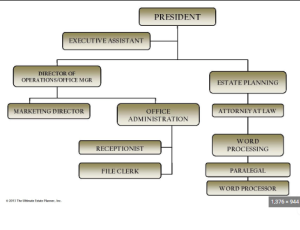Law Firms Organizational Structure: Navigating Hierarchies and Innovations
- Introduction to Law Firms
- Definition and significance
- Importance of Organizational Structure
- Why it matters in law firms
- Traditional Organizational Structures in Law Firms
- Hierarchical structure
- Functional structure
- Matrix structure

- Modern Trends in Organizational Structures
- Flat organizational structures
- Team-based structures
- Virtual law firms
- Factors Influencing Organizational Structure
- Size of the firm
- Specialization areas
- Client needs and preferences
- Challenges in Designing Organizational Structure
- Balancing hierarchy and autonomy
- Adapting to technological advancements
- Case Studies: Successful Organizational Structures in Law Firms
- Example 1: Big Law Firm X
- Example 2: Boutique Firm Y
- Best Practices for Implementing Organizational Changes
- Communication strategies
- Employee training and support
- Continuous evaluation and adaptation
- Conclusion
Law Firms Organizational Structure: Navigating Hierarchies and Innovations
Introduction to Law Firms
Law firms serve as essential entities in the legal ecosystem, providing critical services ranging from corporate counsel to representation in criminal cases. Understanding the dynamics of their organizational structures is paramount for efficient operations and client satisfaction.
Importance of Organizational Structure
Efficient organizational structures ensure clarity in roles, effective decision-making, and streamlined workflows. In law firms, where intricate legal matters demand precision and expertise, organizational structure directly impacts productivity and service quality.
Traditional Organizational Structures in Law Firms
- Hierarchical Structure: Common in large firms, with partners at the top, associates in the middle, and support staff at the bottom.
- Functional Structure: Organized based on legal specialties, such as litigation, corporate law, or intellectual property.
- Matrix Structure: Combines elements of both hierarchical and functional structures, allowing for flexibility in project assignments.
Modern Trends in Organizational Structures
- Flat Organizational Structures: Minimize layers of management, fostering collaboration and quick decision-making.
- Team-Based Structures: Emphasize cross-functional teams, promoting synergy and expertise sharing.
- Virtual Law Firms: Utilize technology to operate remotely, providing flexibility and cost-effectiveness.
Factors Influencing Organizational Structure
- Size of the Firm: Larger firms may require more hierarchical structures, while smaller firms might opt for flatter arrangements.
- Specialization Areas: Diverse practice areas may necessitate functional structures, ensuring expertise in each field.
- Client Needs and Preferences: Flexibility and accessibility may drive the adoption of virtual or hybrid structures.
Challenges in Designing Organizational Structure
Balancing tradition with innovation poses challenges in adapting to evolving client expectations and technological advancements. Striking the right balance between hierarchy and autonomy is crucial for long-term success.
Case Studies: Successful Organizational Structures in Law Firms
Example 1: Big Law Firm X
Implementing a matrix structure enabled seamless collaboration across departments, improving efficiency and client satisfaction.
Example 2: Boutique Firm Y
Adopting a flat organizational structure facilitated agile decision-making and fostered a culture of innovation, leading to exponential growth.
Best Practices for Implementing Organizational Changes
- Communication Strategies: Transparent communication ensures alignment and minimizes resistance to change.
- Employee Training and Support: Investing in training programs equips staff with the skills needed to thrive in new structures.
- Continuous Evaluation and Adaptation: Regular assessments allow firms to refine their structures to meet evolving needs and challenges.
Conclusion
In the dynamic landscape of law firms, organizational structure plays a pivotal role in shaping culture, efficiency, and client satisfaction. By embracing both tradition and innovation, firms can navigate complexities and thrive in an ever-evolving industry.
FAQs (Frequently Asked Questions)
- How do law firms determine their organizational structure?
Law firms consider factors such as size, specialization areas, and client needs to tailor their organizational structures accordingly.
- What are the benefits of a flat organizational structure in law firms?
Flat structures promote agility, collaboration, and quick decision-making, fostering innovation and employee engagement.
- How can virtual law firms ensure effective communication and collaboration?
Virtual law firms leverage technology tools and platforms for seamless communication and project management, ensuring efficient collaboration regardless of location.
- What challenges do law firms face in transitioning to new organizational structures?
Resistance to change, cultural barriers, and technological limitations are common challenges firms encounter during transitions.
- How can law firms evaluate the effectiveness of their organizational structures?
Regular assessments, feedback mechanisms, and performance metrics help firms gauge the impact of their organizational structures and make necessary adjustments.





